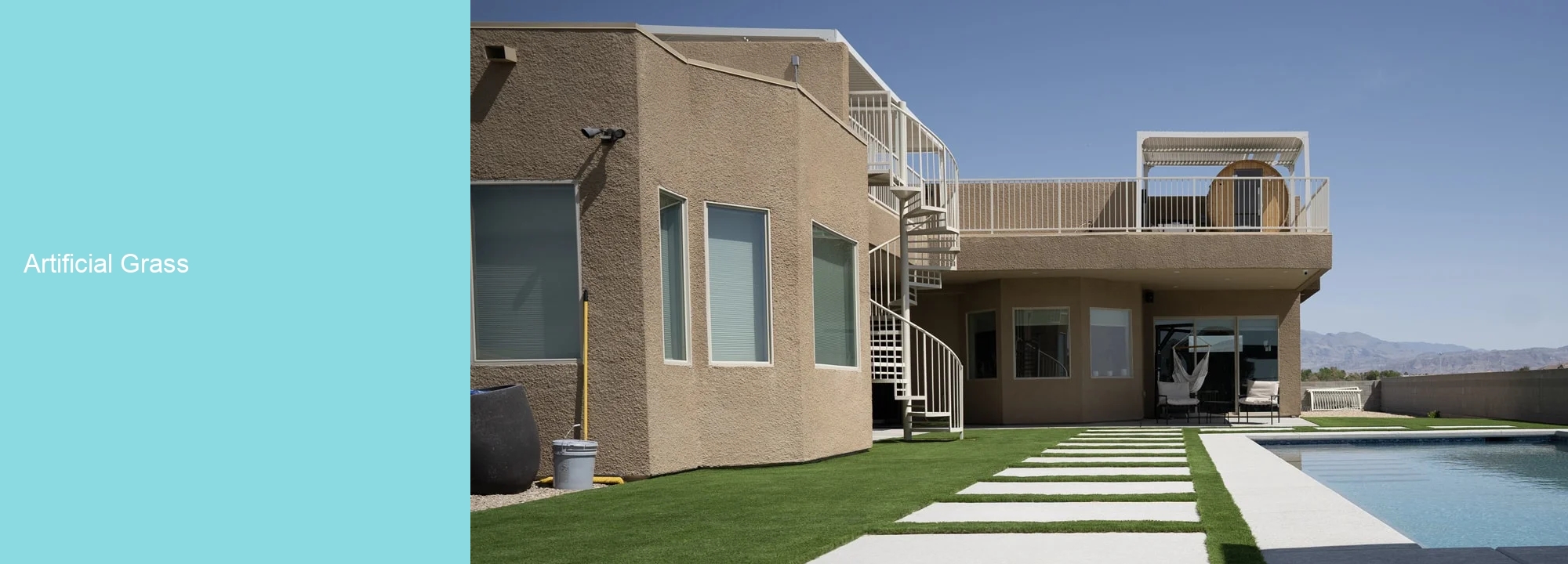

Artificial grass offers numerous economic and environmental benefits. Economically, it significantly reduces water bills as it requires no watering unlike natural grass. The costs for maintenance such as mowing, fertilising, and pest control are also eliminated. From an environmental perspective, artificial grass is beneficial because it does not require harmful pesticides or fertilisers that can leach into the groundwater. It also conserves water resources, particularly in arid regions where water scarcity is a major concern. Furthermore, high-quality artificial turf is often made from recycled materials, contributing to waste reduction. Therefore, opting for artificial grass is both cost-effective and eco-friendly.
The primary materials used in the manufacturing process of artificial grass are polyethylene, polypropylene, and nylon. Polyethylene is utilized for its softness and durability, making it ideal for residential or low traffic areas. Polypropylene is chosen for its resistance to UV radiation and heat, while nylon's strength makes it suitable for high traffic areas. These synthetic fibers are colored with environmentally friendly pigments that resist fading. The technologies employed include extrusion machines that melt these polymers into a liquid form before pushing them through a die to create thin strands, which resemble natural grass blades.
The production of artificial grass begins with the melting and extruding of the chosen plastic resin into yarns. This is followed by tufting, where these yarns are sewn into a backing material to form the basic structure of the turf. Next comes coating; here, a secondary backing layer is applied using an adhesive to enhance durability and stability. Then there's perforation - holes are created in this backing to allow water drainage. Finally, the turf goes through inspection before being rolled up ready for distribution or installation. Throughout these stages, quality control measures ensure consistency in color, density, height and other critical parameters ensuring each roll meets set standards.
Installing artificial grass entails several steps to ensure its longevity and durability. Firstly, the area where the turf will be placed needs to be prepped by removing any existing grass or soil and installing a weed barrier. Next, a layer of crushed stone is added for drainage, compacted down and leveled off for smoothness. The artificial grass roll is then unrolled onto this surface, cut to fit as needed, and secured with landscaping pins or adhesive.
In terms of maintenance procedures for artificial grass, it's relatively low-key compared to natural lawns. Regularly brushing the grass helps prevent matting and keeps the blades standing upright for a natural look. Spills or pet waste can be rinsed away with water - if necessary, mild detergent can also be used for cleaning up stubborn dirt or stains. Additionally, periodically topping up the infill helps keep the turf stable and lush. It's also important to check regularly for any signs of damage so that prompt repairs can be made if required.
1.Regular brushing 2.Rinse spills or pet waste 3.Use mild detergent as needed 4.Top up infill periodically 5.Check regularly for any damages
Natural Grass: Pros and Cons Natural grass provides a classic aesthetic appeal, is biodegradable, and beneficial to the environment as it releases oxygen and absorbs carbon dioxide. It can also cool the surrounding area on hot days. However, maintaining natural grass can be labor-intensive and costly. It requires regular mowing, watering, weeding, fertilizing, and reseeding. Natural grass is also susceptible to pests, diseases, and may not fare well in extreme weather conditions or high foot traffic areas.
Artificial Grass: Pros and Cons Artificial grass offers a convenient alternative with low long-term maintenance requirements. It remains green year-round regardless of weather conditions, needs no watering or mowing, is resistant to heavy use and can be tailored for specific sport uses such as football or golf. It's also an excellent option where water conservation is necessary. However, artificial grass doesn't provide the same cooling effect as natural grass nor does it benefit the environment by absorbing carbon dioxide or releasing oxygen. Initial installation costs are often higher than natural turf but are offset over time due to lower maintenance costs.
The artificial grass industry is expected to witness numerous innovations in the coming years. Technological advancements are anticipated to enhance the realism and durability of synthetic turf, making it even more comparable to natural grass. Improved UV protection, enhanced drainage systems, and advanced infill materials are among the transformative innovations projected for this sector. In addition, there’s a growing trend towards integrating smart technology into artificial grass, such as sensors for monitoring usage and wear patterns.
Sustainability is becoming an increasingly important factor in the artificial grass market. Manufacturers have started focusing on creating eco-friendly products that use recycled materials and require less water for maintenance. The future might see artificial grass that is fully recyclable or biodegradable, reducing its environmental impact significantly. There's also a push towards reducing microplastic pollution associated with synthetic lawns through innovative design approaches.
With increased urbanization and a decreasing availability of open green spaces, the market demand for artificial grass is predicted to surge globally. Its low-maintenance nature coupled with improved aesthetic appeal will likely drive growth in both residential and commercial sectors. Emerging markets such as Asia-Pacific region could present lucrative opportunities due to rapid urban development programs. Furthermore, sporting arenas are likely continue their adoption of high-performance artificial turfs due to their durability and year-round usability.